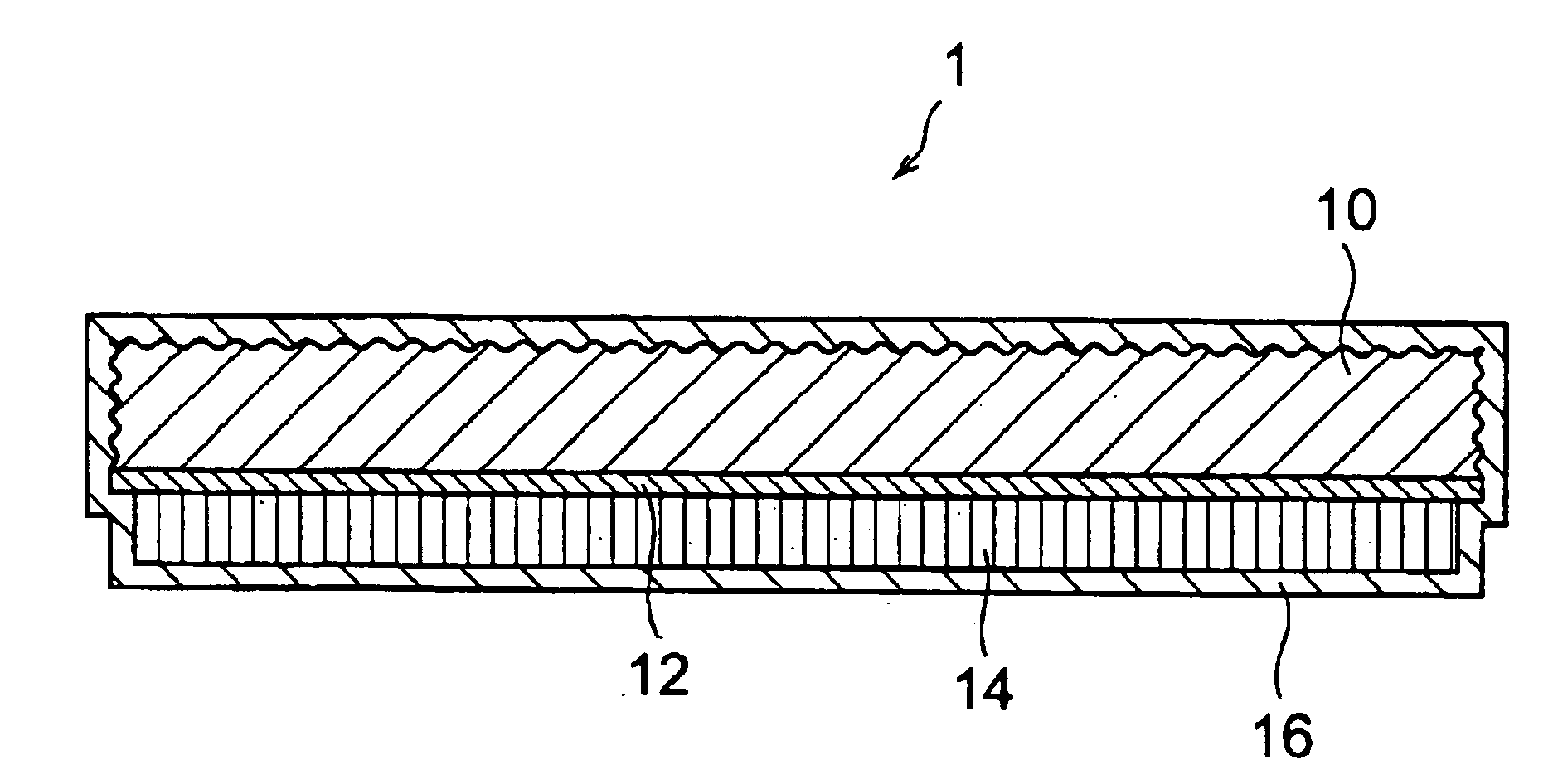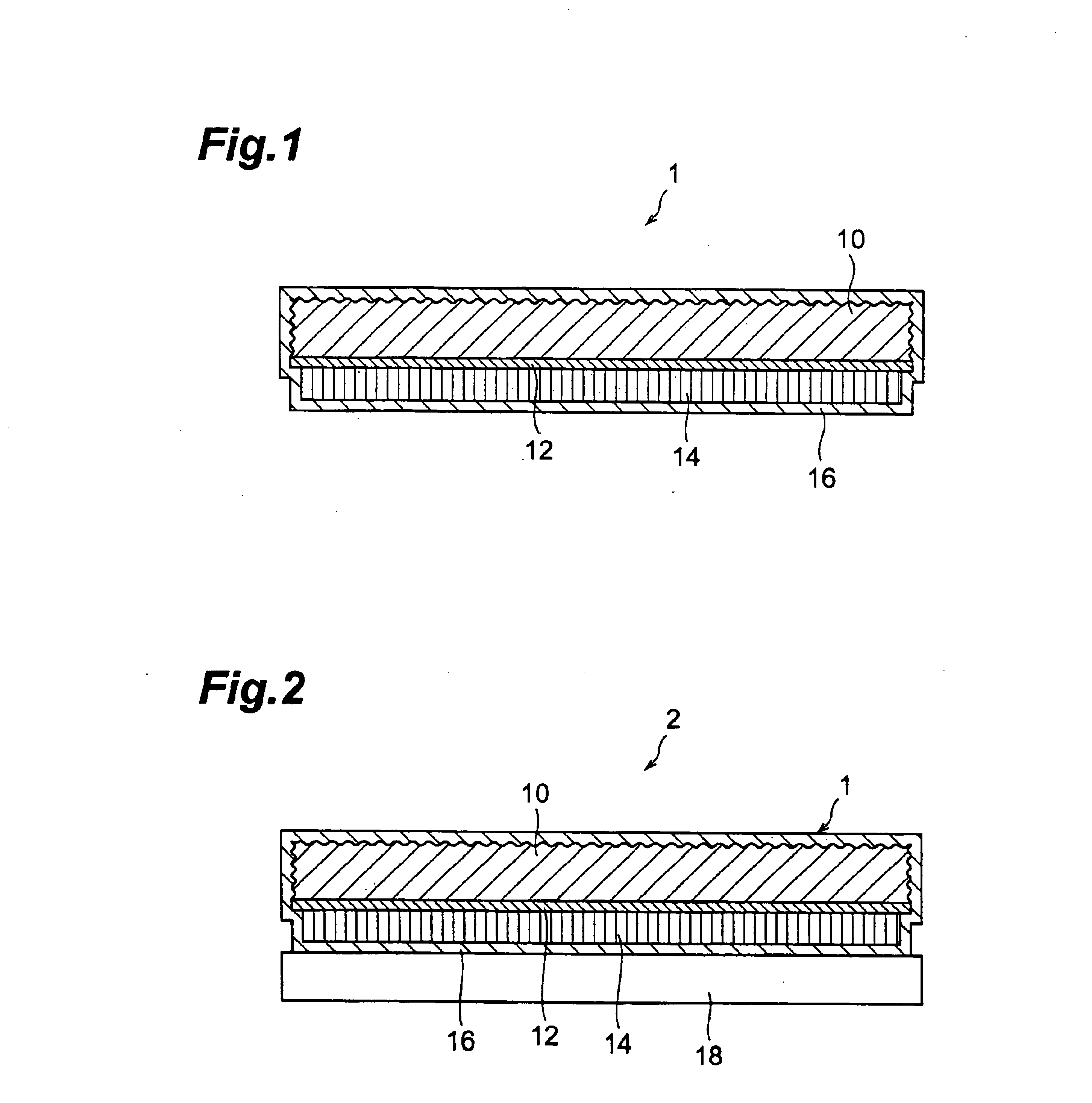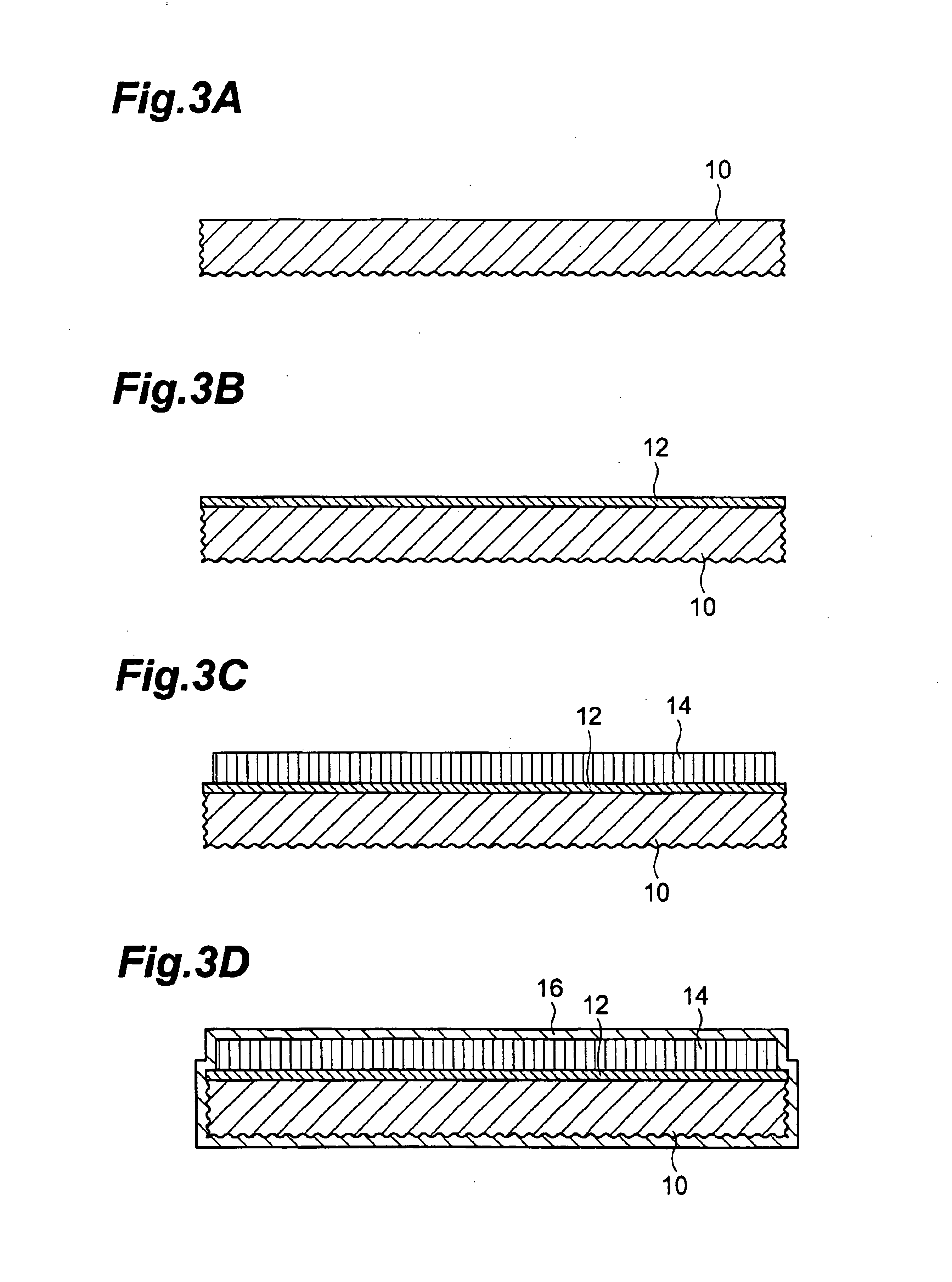Scintillator panel and radiation image sensor
a radiation image sensor and scintillator technology, applied in instruments, optical radiation measurement, fluorescence/phosphorescence, etc., can solve the problems of radiation detectors and insufficient optical output, and achieve the effect of enhancing the optical output of scintillator panels and enhancing the output of radiation image sensors
- Summary
- Abstract
- Description
- Claims
- Application Information
AI Technical Summary
Benefits of technology
Problems solved by technology
Method used
Image
Examples
Embodiment Construction
[0023]In the following, a first embodiment of the present invention will be explained with reference to FIGS. 1, 2, and 3A to 3D. FIG. 1 is a sectional view of a scintillator panel 1, whereas FIG. 2 is a sectional view of a radiation image sensor 2.
[0024]As shown in FIG. 1, one surface and side faces of a substrate 10 made of Al in the scintillator panel 1 are sandblasted, whereas the other surface is processed into a mirror surface. Also, the other surface is formed with an MgF2 film (refractive index=1.38) 12 as a low refractive index material (material having a refractive index lower than that of a scintillator 14). The surface of this MgF2 film 12 is formed with the scintillator 14 having a columnar structure for converting incident radiation into visible light. Here, Tl-doped CsI (refractive index=1.8) is used for the scintillator 14. Together with the substrate 10, the scintillator 14 is covered with a polyparaxylylene film 16.
[0025]As shown in FIG. 2, on the other hand, the r...
PUM
 Login to View More
Login to View More Abstract
Description
Claims
Application Information
 Login to View More
Login to View More - R&D
- Intellectual Property
- Life Sciences
- Materials
- Tech Scout
- Unparalleled Data Quality
- Higher Quality Content
- 60% Fewer Hallucinations
Browse by: Latest US Patents, China's latest patents, Technical Efficacy Thesaurus, Application Domain, Technology Topic, Popular Technical Reports.
© 2025 PatSnap. All rights reserved.Legal|Privacy policy|Modern Slavery Act Transparency Statement|Sitemap|About US| Contact US: help@patsnap.com



